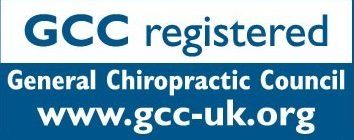CranioSacral Therapy
Using the gentle focused touch of Cranio-Sacral Therapy the body is invited to begin a process of self-healing via a process of unwinding the various twists, torsions and restrictions within the fascia.
The fascia is a network of connective tissue that surrounds every organ, muscle and tissue throughout the body.
The name "Cranio-Sacral" is derived from the system's associated bones. Included are those of the skull, face and mouth, which make up the cranium, and of the spinal column which extends down to the sacrum. Membranes surround the brain, extend down the spinal cord and enclose the hydraulic system pumping the cerebrospinal fluid around. The movement of these membranes is what is termed the Cranio-Sacral rhythm.
Life’s traumata sometimes can have a negative impact on the Cranio-Sacral system impeding the movement of the fascia and fluids around the body (lymph, blood, interstitial fluid and cerebrospinal fluid) which can lead to disturbances in the integrity of the system.
A Cranio-Sacral therapist recognises the various rhythms of the body created by the flow of these membranes and fluids, and can recognise when they are abnormal and help the body to release the restriction on whatever level they appear.
As Cranio-Sacral therapists we are working with a very deep innate desire of the body to heal; encouraging a state of balance. In this state of balance, the body can function much more efficiently requiring less of the body’s resources.
Over time this results in the client feeling more in control, creative and generally at one with themselves. Healing in this way normally occurs over a period of time, and this differs from person to person and is dependent on the length of time of the imbalance how deep the effects are and the desire to change.
During a session of Cranio-Sacral therapy you remain clothed, usually lying on your back, but it can be performed in whatever posture is most comfortable, and for extra comfort you may be covered with a blanket.
Because each of us produces our own different reactions to trauma, stress and loss of healing capacity, we each present our own unique combination of ailments, pains and dysfunctions. And, because Cranio-Sacral Therapy helps clear the way for our self-healing mechanisms to be more effective, its scope is very wide indeed.
We practise Upledger, CCST and Karuna styles of Cranio-Sacral therapy.
Sue Weller
is our Cranio-Sacral therapist

